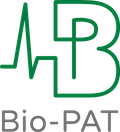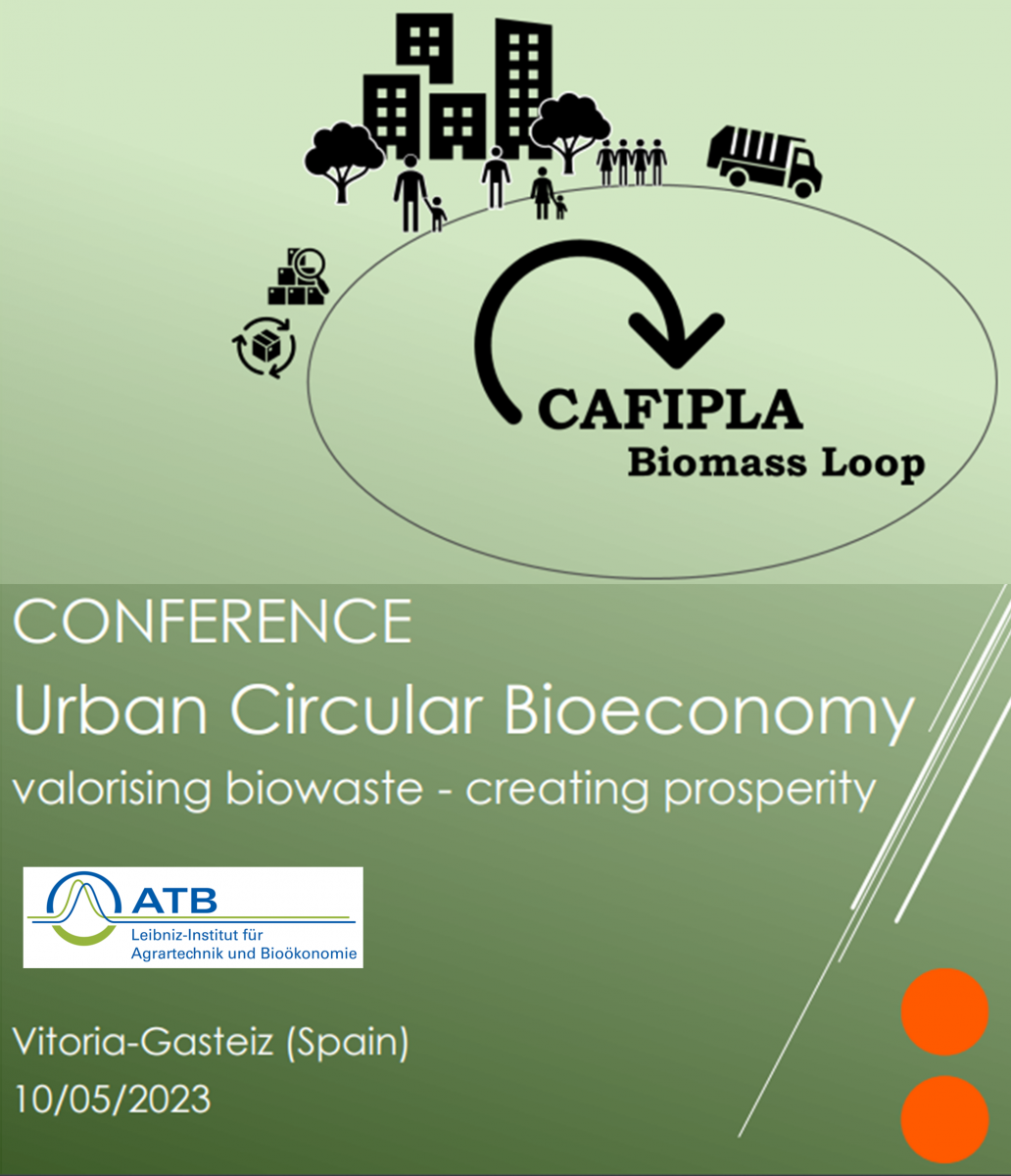ATB at the „Urban Circular Bioeconomy“ conference – valorising biowaste – creating prosperity: CAFIPLA
After 3 productive years, the project „CAFIPLA–Combining carboxylic acid production and fibre recovery“ came to a successful end. At the final Urban Circular Bioeconomy Conference on May 10th, the project partners, including the Leibniz-Institute for Agricultural Engineering and Bioeconomy, presented findings of the final months and the trial phase of the CAFIPLA pilot plant. The CAFIPLA technology provides an alternative concept to biowaste valorisation and scaled up the process to TRL5. Joined by expert speakers from the City Council and European projects such as Tech4Biowaste and the HOOP network, the participants discussed state-of-the-art approaches and needs to be addressed in the future for accelerating implementation of the urban circular bioeconomy.
The Conference recordings are available online and the Proceedings can be downloaded here.
The conference booklet incl. the Agenda can be downloaded here.
About the conference:
The establishment of a sustainable circular urban bioeconomy requires the effective up-cycling of available biomass resources, especially as biowaste flows in cities can be used for the production of value-added bio-based products such as chemicals, plastics or nutrients. Therefore, the European Commission established already in the Bioeconomy Strategy (2018) that “…cities should become major circular bioeconomy hubs…”.
The conference:
– Provided feasible pathways to transform urban biowaste into a resource/precursor for other industries via an innovative approach of the combination of a Short Chain Carboxylic Acid Platform and a Fiber Recovery Platform approach.
– Established a sustainable circular urban bioeconomy that offers solutions for the effective recycling of available biomass resources into biochemicals, plastics and nutrients.
Bioeconomy experts from Industry and Research provided insights in biorefinery, raw material availability, technology aspects of the combined platform approaches, fermentation pathways to transform short chain carboxylic acids into added value compounds to support the implementation of a circular biowaste based bioeconomy.
Presentation of Dr. J. Venus, ATB:
Biowaste as feedstock for lactic acid fermentation
Dr. Joachim Venus – Leibniz-Institute for Agricultural Engineering and Bioeconomy (competence area Microbiome Biotechnology) (Germany)
The recording of this talk can be seen here, it starts at min 56:30:
Abstract:
Introduction: Among the 17 sustainable development goals (SDG) SDG7 “Ensure access to affordable, reliable, sustainable, and modern energy for all”, SDG12 “Ensure sustainable consumption and production patterns” and SDG13 “Urgent action to combat climate change” are interrelated and have become a high priority on the research agenda. Especially for biotechnological processes, in which the carbon of various substrates should be converted into microbial products, there is an increasing interest in the use of cheap raw materials, biogenic residues and wastes.
Aims: The goal is to develop high performance fermentation processes based on the substitution of expensive substrates and nutrients by cheaper materials from biomass and residues due to their main proportion of the whole costs.
Materials and Methods: Many feedstocks cannot be used normally for fermentation directly because the fermentable sugars are bound in the structure especially as cellulose and several types of hemicelluloses. A pre-treatment of agricultural residues is required when enzymes are used for hydrolysis in an enzymatic approach. Possible disturbing impurities and inhibitors (e.g. phenolic components from lignocellulosics, heavy metals in municipal waste or recycled paper), difficult to use components (e.g. pentoses) and partly fluctuating or relatively low concentrations of bio-available carbon sources in these materials should be considered. Special detoxification steps can help to improve the fermentability and con-version efficiency of such lignocellulosic hydrolysates. According to the difficulties mentioned in the mobilization of fermentable sugars a range of other, easily accessible substrates are suitable for fermentation processes (such as residues from fruit and vegetable processing, by-products from starch and sugar factories or from the baking industry).
Results: The viability of the production of organic acids from several residues has been demonstrated from laboratory up to pilot scale including the entire value chain starting from the raw material and resulting with a polymer-grade product (in case of subsequent bioplastic production). Pre-treatment methods are energy-
intensive, and the selection of an efficient method is crucial for the overall economy of a biotechnological process. As a result of the achievements so far, the optimization of pre-treatment, hydrolysis, fermentation, and downstream processing steps in parallel together with the screening of suitable bacteria have been
performed.
Conclusion: The entire processing chain has been implemented to generate lactic of high purity and quality. Exploitation of these monomers to produce biopolymers is one of the recent applications. It is likely that one of the future trends in biochemical production will end up in mixtures of different low-cost raw materials to avoid the use of expensive complex supplements.
The Leibniz-Institute for Agricultural Engineering and Bioeconomy (competence area Microbiome Biotechnology) is member of the Bio-PAT Network.


